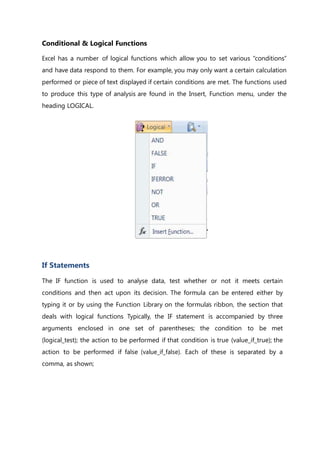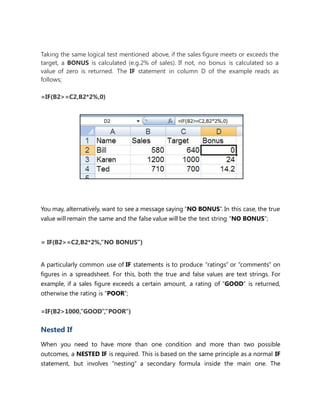This document discusses Excel formulas and functions for summarizing and analyzing data. It covers:
1) The AutoSum feature which allows users to quickly add, average, count or find other values for selected cells with one click.
2) IF statements which enable conditional logic - testing if a condition is met and returning one value if true and another if false. Nested IF statements allow for multiple conditions.
3) Logical operators like >, <, = that are used to define conditions in IF statements by comparing cell values.
4) Examples of IF statements that return numbers, text, or formulas depending on conditional tests being met.






